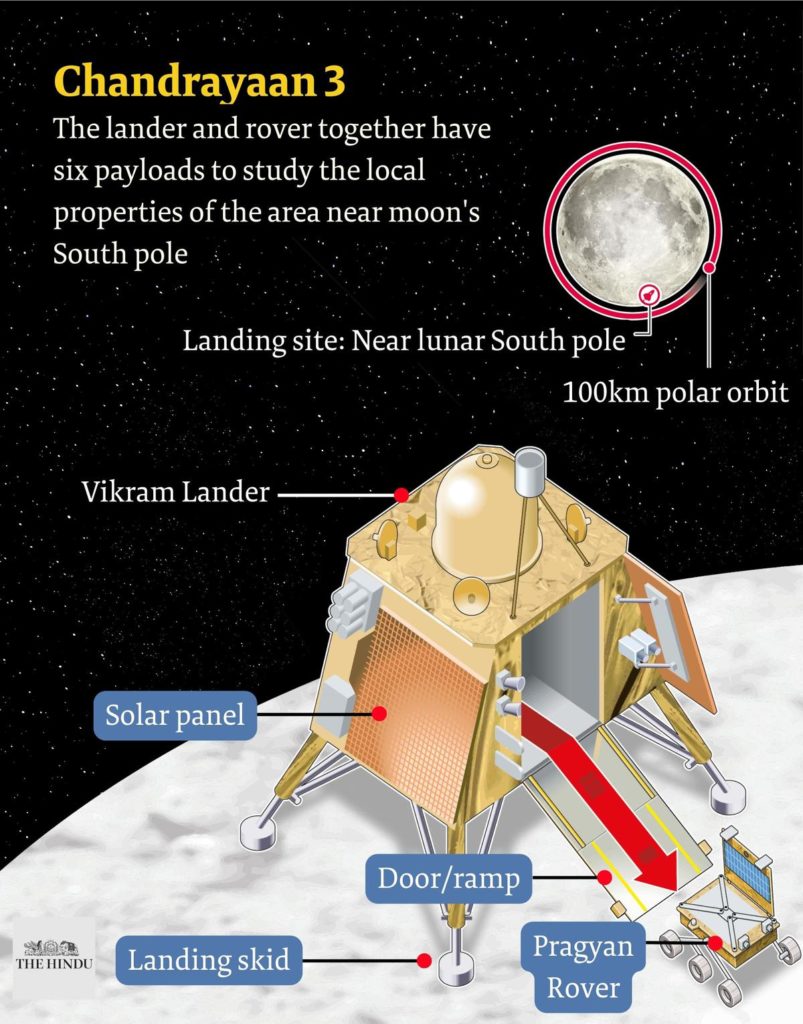ForumIAS announcing GS Foundation Program for UPSC CSE 2025-26 from 27th May. Click Here for more information.
Contents
Source: The post is based on the article “Chandrayaan-3 | India lights up the dark side of the moon” published in The Hindu on 24th August 2023.
What is the News?
The Lander Module (LM) of the Chandrayaan-3 Mission has made a successful landing on the Moon’s surface.
With this, India became the first country to land near the Moon’s south pole and the fourth country after the erstwhile USSR, the U.S. and China to make a soft landing on the lunar surface.
What is Chandrayaan-3?

What is Soft Landing?
Soft landing refers to the controlled descent and subsequent touchdown of a spacecraft on the lunar surface without causing significant damage to either the craft or its scientific instruments.
It is achieved by reducing the spacecraft’s speed gradually, allowing it to touch down gently.
Such landings ensure a gentle interaction with the Moon’s rugged terrain, enabling the collection of valuable data, exploration, and potentially serving as a precursor to human missions.
The landing site is near the south pole of the moon at 70 degrees latitude.
Why does ISRO want to explore the South Pole?
What happens after Chandrayaan 3 successfully lands on the moon?
Spacecraft are often carrying certain instruments and experiments with them (called payloads) that observe and record what is happening in Space. This information is then relayed to Earth for scientists to analyze and study.
The six payloads on the Vikram lander and rover Pragyan remain the same as the previous mission.
There will be four scientific payloads on the lander to study lunar quakes, thermal properties of the lunar surface, changes in the plasma near the surface, and a passive experiment to help accurately measure the distance between Earth and the Moon. The fourth payload comes from NASA.
There are two payloads on the Rover, designed to study the chemical and mineral composition of the lunar surface and to determine the composition of elements such as magnesium, aluminum and iron in the lunar soil and rocks.




